
| e-BUSINESS MODELS |  |
see
also Cannibalization witiger.com/ecommerce/cannibalization.htm
.
For the students of Prof.
W. Tim G. Richardson, Toronto, Canada
.
 |
This web page has audio clips - just click on the icon (like the one to the left) and you can hear Prof. Richardson's voice adding additional information to topics on the page. |  |
turn on your speakers to hear audio clips |
WTGR is choosing to quote
Shaw in the context of discussing digital age entrepreneurs who had crazy
ideas - which proved to be profitable
.
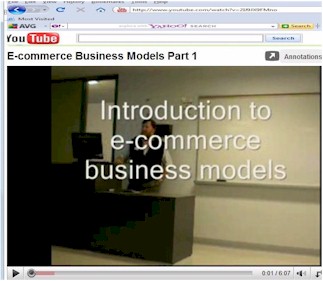 |
"Intro
to e-commerce business models" by Prof. Tim Richardson Feb 2nd 2010
A Summary of the content
on the first half of this page www.witiger.com/ecommerce
camera by Vanja |
.
| .. | This unit is
used in
|
||
| . | Not all of the material in this unit will be used in each of these courses; the amount of material covered will be indicated by the actual lecture given in class by the professor. Some courses cover this topic extensively, some courses deal with it briefly. |
|
"Jean-Paul
Satre once said history could be viewed as if one were looking out the
back of a moving car: all the nearby scenery is a blur that starts to come
into focus somewhere down the road. And so too it is with e-commerce business
models - they are still blurring past us at an unprecedented speed, whilst
there is not yet much further down the road on which we may focus."
|
| LEARNING
OBJECTIVES |
The purpose
of this unit on Business Models is to have the student understand that
|
| KEY
POINTS |
Opening this unit with a
quote from Machiavelli reminds us that the consideration of new business
in a "challenging" environment is not just something we had to deal with
in the 1990's and the new millenium, it goes way way back.
The quote from this philosopher also suggests that when it comes to business models, it is always difficult to be the one to go first - which is often what is happening in the first years of Y2K - many companies are the "first" to do something new. Going first can be very "uncertain" - but, it you succeed, it can also mean you have a head start on everyone else and it can be hard for the competition to catch up. |

pic supplied by Karen |
Karen, in MGT
471 at UTM in January 2006 was interested in the material we discussed
about Machiavelli and sent an email in which she said...
I was quite fascinated with what Nicollo Machiavelli had to say that it's usually harder to be the one to invent something new first. So I wanted to find examples, other than the ones you mentioned in class. Here's what I found:
|
| Karen writes, Fuji
was the first to invent disposable cameras in 1986, however Kodak has now
invented the digital disposable camera - the KODAK Plus Digital 35 mm One-Time-Use Camera System. Kodak has taken the ideas invented by Fuji and taken it one step further in allowing the camera to take both traditional photos and digital photos. There are some reservations about this disposable digital camera where it might make more sense to just buy the more expensive digital camera. http://www.g4tv.com/callforhelparchive/features/44779/Disposable_Digital_Cameras.html Also
Kodak got the digital camera idea from the original technology used to
invent the first video tape recorder in 1951. In the 60's NASA started
using digital signals with their space probes to map the surface of the
moon (sending digital images back to earth). It was only in the mid-70's
that Kodak then got the idea to make digital cameras available for the
consumer-level market.
|
| Machiavelli
First Mover Advantages Bell vs. Rogers
|
Manraj S., in
MGT 471 at UTM in January 2011
Emailed Jan 15th to say "After your lecture covering E-business models I was very intrigued by Nicolllo Machiavelli?s statements about being the first do something. After the lecture I was interested in locating some real world cases that were similar to the examples discussed in class and I immediately thought of the companies Bell and Rogers Communications. From its inception and much throughout the 1990s Bell obtained a monopoly in communications dominating Canadian markets in services such as home phone, television, cell phone and internet. Bell's infrastructure spanned the entire width of the country and was the primary provider of telecommunication services for a majority of Canadian consumers. Although Rogers was a key player in the television industry, it lacked the ability to expand into the wireless and phone markets until it purchased Cantel Inc in 1985, a wireless company to further its abilities to breach the market dominated by bell. They were slowly able to penetrate the market and provide greater services than that offered by Bell." Manraj concludes "Bell had obtained the first mover advantage but Rogers ultimately entered the market and were able to provide a wider range of services for a far cheaper price. They took things a step further by purchasing the Toronto Blue Jays and the Toronto sporting stadium previously named the `sky dome` allowing them to penetrate the sports market and create additional revenue. It is clear that being first does not mean you are going to remain at the top, and the Roger`s Vs. Bell example is a clear Canadian case that is relevant to myself as I was previously using Bell services growing up, and now am a Roger`s Customer today." |
| Definition |
from
digitalenterprise.org/models/models.html
|
| Why Business Models are Important to Study | "According
to www.dotcomfailures.com, the number one
reason (47%) dot com owners stated for failing is a faulty business model.
(A business model is the strategy by which
a company plans to make and sustain its income.)...it is getting
harder for companies to deliver profitable growth
on a sustained basis. It is also more difficult for many companies
to hold their ground and not fall behind. The key reasons include
the dramatic increase in complexity in managing business and the increasing
premium put on innovation. The complexity is due to significant and irreversible
changes in the business environment. The pace of business is accelerating
beyond the ability of most corporations to adjust. "
Witiger translates the above
statement from Booz-Allen
http://www.strategy-business.com/research/96201/page1.html
|
| TEXT
RESOURCES |
Several of the texts we
use in this unit discuss Web Business Models.
Some discuss the model in terms of
(eg. provider based, user based) |
 |
In this unit on Business Models, we will refer to material from the following texts |
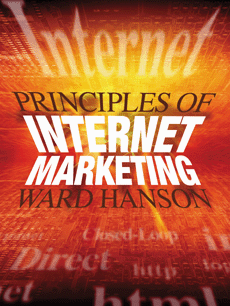 |
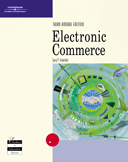 |
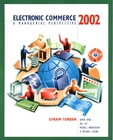 |
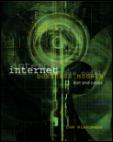 |
 |
| Hanson: Principles of Internet Marketing Chpt 5 | Schneider/Perry
Electronic Commerce 3rd Edition Chapter 8 (in 2nd edition) Chapter 3 (in 3rd edition) Chapter 3 (in 4th edition) |
Turban: Electronic Commerce: A Managerial Perspective 2002 Edition | Internet
Business Models : Text and Cases
by Dr. Thomas R. Eisenmann, Harvard Business School If we had the time for several lectures on business models, this would be a good book to use. |
Internet
Business Models and Strategies: Text and Cases Dr. Allan Afuah, Dr.
Chris Tucci
- we used Chpts 4 and 5 - has a good taxonomy of business models |
| . | . | . | . | . |
| This text book discusses | This text book discusses | This text book discusses | This text book discusses | This text book discusses |
| Provider based
revenue models
User pay based revenue models |
The Web Catalog
Advertising-Supported Advertising-Subscription Mixed Fee-for-Transaction Fee-for-Services Revenue |
Direct Marketing vs Indirect
Marketing
Full Cybermarketing vs Partial Cybermarketing Electronic Distributor vs Electronic Broker Electronic Store vs Electronic Shopping Mall Generalized E-malls/stores vs Specialized E-malls/stores Proactive vs Reactive Strategic Posture toward Cybermarketing Global vs Regional Marketing Sales vs Customer Service |
Internet Access
Providers
Online Portals Online Content Providers Online Retailers Online Brokers Online Market Makers Networked Utility Providers Application Service Providers |
Brokerage model
Advertising model Infomediary model Merchant model Manufacturing model Affiliate model Community Model Subscription Model Utility Model |
 Witiger's
summary of all the e-Business Models Witiger's
summary of all the e-Business Models
First, divide the list according to whether it is a physical product or a service - many services can be sold online and are unique to the Internet world, many of the products sold online simply use the Internet as another form of advertising and the "model" is not so special. The second thing to
do is divide the list according to whether the product/service is for business2business
purposes, or for consumers direct - the differences are huge. An online
website listing plastic autoparts will require a completely different arrangement
than a website selling DVD movies to individual customers.
|
 |
Hanson: Principles
of Internet Marketing Chpt 5 Web Business Models
Revenue based business models
p. 131- 132 Hanson text
|
| Provider based revenue models |  |
| User pay based revenue models |  |
| Example of a Provider based revenue models | Example of
a Provider Based Revenue Model
o you have a lot of exciting and interesting content and you allow access for free o you make money by giving vendors access to your customers so they can advertize to them
Annie sent an email, and explained "Today in class you explained how advertisers can get a targeted audience by simply offering some free viewing of their products. Then in order to target the audience they want, they offer free membership in which they must give their names, email, address, etc. Here's a good example: www.snapfish.com lets you upload your pictures for free so that you create an online photoalbum to share with all your friends. Once you upload these pictures, you type in all of your friends email addreses. Then snapfish.com sends out all these invitations to your friends and they must sign up in order to view the pictures. Of course, the smart thing about snapfish.com is that once you are a member, you are entitled to 2 free pictures per order. Since your friends would not have access to the original copies of the picture off snapfish.com, they would have to order the pictures if they wanted it." Witiger "Thanks Annie, that was a great example and a helpful explanation, your contribution is appreciated" |
| Example of a Provider based revenue models | Example of
a Provider Based Revenue Model
"As Annie suggested, advertisers want to target a specific demographic or audenices by providing free content or prizes to attract the customers. In return, the customer has to provide personal contact information such as their name, address, phone number, e-mail, and etc. So here is my example: I work at a Wal-Mart Photo Center.
WTGR responds Yes Vic, is all about capturing the customer and turning them into a relationship which you can milk for every possible advantage - CLV |
| New
Business Models 2010 |
I had a long conversation with a friend of mine about how Google is bleeding cash (~ $470 million per year) in order to pay for the bandwidth required to serve 75 billion videos a year on Youtube. (Multichannel, 2009) The author came to this conclusion as he assumed that the internet still followed the traditional cost structure, where" money flowed upwards - little ISPs paid regional ISPs who paid major ISPs who paid backbone operators." (wired, 2009) However, a few days ago he sent me an article showing that this is not the case at all, in fact it is hypothesized that Google pays close to $0 to serve its byte hungry users. This is because Google "owns" 10% of the traffic on the internet and it also owns an extensive among of optical fibre known as "Dark Fibre"; unclaimed fibre optic cables. Thus Google "peers" with ISPs, essentially trading its Youtube traffic and other services with local ISPs. Moreover, because it owns a fair portion of internet cables, Google need not rent telecom lines from local carriers. This is just one of the many examples of dynamic shift in the "power" structure of the internet. "Who pays whom is changing, "All sorts of negotiations are happening behind closed doors." Says Labovitz, the Chief scientist for Arbor Networks, a firm that monitors 70% of global ISPs. WTGR responds,
thanks, your email is informative and also raises some issues for business
models going into the next decade of the millenium.
WTGR reminds readers/students that Google has stated in a 300 yr business plan its goal is to "index all the world's information and make it searchable". In order to do this effectively, it would make sense to have a vertical monopoly on the information process from the hardware in the ground, all the way through to the data on the servers. |
| New
Business Models 2009 |
In my Feb 2009
response to student Vic about Wal-Mart's Photo Centre i made the point
about "capturing the customer and turning them
into a relationship"
This "relationship building" aspect is part of a new business model which has been termed "co-creation" or "co-production"
|
| New
Business Models 2009 |
Co-creation Business Model
In an "old school" way this was done in the 1970's and 1980's by allowing customers access to expensive apparel and accessory items with the company logo - thereby allowing customers (for free) to be come part of the branding strategy. Instead of employees doing 100% of the marketing, you have loyal customers taking on some of the load. As the web began building more strongly in 2004, 2005 and 2006 we have seen the rise of online communities associated with high profile consumer brands. A number of these web-based communities allow substantial interaction among consumers of a product and this interaction allows for
Company's who carefully monitor
web-based exchanges among users of their products and services can incorporate
this into monetizing additional circumstances of their corporate activity
and reap rewards in an intensely competitive and technologically-fast-paced
environment.
|
| Co-creation
Business Models 2014 |
An example of
a web based enterprise created with crowdsourced university course content
using the co-creation business model
Katherine couldn't make to the class at short notice but was very kind to write the following discussion/description about co-creation business models and put it into the context of the "Environments" that effect business. oneclass.com has now expanded to include exam prep, exam bank solutions and analysis and many other helpful things for students. see them on Facebook www.facebook.com/Notesolution |
| Co-creation
Business Models 2014 from
|
Katherine's explanation
"The original iteration of
the OneClass-Notesolution site was purely a company that followed the co-creation
model. OneClass (formerly Notesolution) would create the platform and the
students would be creating the content that would act as the supply.
Political/Legal/Regulatory Environment
When Katherine notes that " the calibre of the content is solely determined by the calibre of content creators" this is a simple concept, but rife with many problems - leading to situations where some managers of co-creation social media sites are in a situation of having to defend themselves for consequences of certain content that gets posted... such a images part of a bullying action. So while i tmay seem sinple and opportunistic to say "get a big server and let people upload content we cna make money from".. the reality is you may find yourself having to go through all the content to make sure it adheres to the Political/Legal/Regulatory Environment in the jurisdiction(s) that effect your operations. |
| Co-creation
Business Models 2014 
oneclass.com |
Economic Environment
|
 . .
oneclass.com |
Sociocultural
|
| Co-creation
Business Models 2014 from
|
Technological
|
| Co-creation
Business Models 2014 from
|
Competitive
|
| Co-creation
Business Models 2014 from
|
Some examples
of co-creation model sites:
"Probably the most interesting on-going concern that co-creation model businesses have to concern themselves with is how to attract AND retain their top content creators. Without the top quality content, the people will stop going to the site altogether. Think about a YouTube where all their top partners left for another communication channel, would you still use the site to watch videos?" Interesting Videos about Co-Creation models The Problem with Facebook http://www.youtube.com/watch?v=l9ZqXlHl65g YouTube Ignores Content Creators Concerns http://venturebeat.com/2013/12/11/youtube-ignores -content-creator-concerns-in-statement-regarding-mass-copyright-flagging/ |
| New
Business Models 2009 |
Ajit Kambil, G. Bruce Friesen and Arul Sundaram, Outlook Journal, June 1999 |
| New
Business Models 2009 |
Co-creation and Privacy
Issues
The impediment for such corporate
control should be the dire consequences if such inteference becomes public
- the negative press could be disastorous. Companies should have the confidence
that both good and bad information is welcome through customer communications
since the bad information can serve to guide improvements in product quality
and service.
|
| New
Business Models 2009 |
Co-creation - The Upside
of Losing Brand Control
|
| New
Business Models 2009 |
Co-creation means 2 way
communication
Companies who use Co-creation
well in 2010 and beyond will be companies that are adept at listening and
doing a good job of communicating to their customers that they really hear
the messages coming back, and that these messages are valued, helpful,
and will be attended to.
|
| Example of a User pay based revenue model | Example of
a User Pay (Subscription) Based Revenue Model
o you have a lot of exciting and interesting content, you some allow access for free, and the viewer then pays to see/read the rest of the material o you make money from the users of the material
Amy sent an email, and explained "Hi Sir, Today I read the text online about business model-User pay based revenue models. From the content it says that the user pays a subscription fee or access fee to see content or information that they cannot get elsewhere on the web. I found a website www.autonews.com. This website is designed to give users access to all the content of Automotive News. In the website, you can read some content for free but if you want further information then you need to be a subscriber which means you need to pay the subscription fee in order to get the entire information. For example, if you are the subscriber then you get the entire contents of Automotive News and Automotive News Europe, Data Center and the archives to Automotive News and Automotive News Europe. If you are an Automotive News Group German Market Newsletter subscriber then you get access to German Market section. You will get the information about Europe's largest automotive market... ." Witiger "Thanks Amy, that was an interesting example and your email explained it well, thanks for your contribution" |
| Example
of an
Advertising Business Model |
Example of
a Advertising supported Business Model
o you have a lot of exciting and interesting content, you make money from advertisers who want their ads to be seen by users viewing the ads among the content
"What’s even more interesting is that CBS doesn’t expect online advertising to cannibalize their TV ad sales." |
 |
Example of
a Advertising supported Business Model
Ray adds "I think this is extremely relevant as it shows an advertising model still works, even though various other advertising supported models have failed. What started out as an experiment to “see how many slackers at the office would tune in” has turned into big business for CBS." The
story can be found here:
Witiger
ads
Footnote: the pic to the left is Canada's own Denham Brown, formerly of Scarborough's West Hill Collegiate and a NCAA Champion when he played with the University of Connecticut Huskies http://uconnhuskies.com/ |
 |
Internet
Business Models and Strategies: Text and Cases
Dr. Allan Afuah, Dr. Chris Tucci |
| Business
Models text resources
|
( in the some editions they title this "Sell Goods and Services") |
| Business
Models text resources |
Schneider/Perry
Electronic Commerce
(page 95 in 3rd edition, page 117, 6th edition) |
| Business
Models text resources |
|
| Business
Models text resources |
Schneider/Perry
Electronic Commerce
(called "Sell Information or Other Digital Content" in the 2nd edition) some of these business are completely new to the information age eg. web sites selling screensavers and wallpaper, others are reconfigurations of older businesses, eg. stock market info or sports teams info or dating services |
| KEY
POINTS |
You could also further subdivide
these models into
|
| Student Raquel J., MRK 410 Feb 2005, found this good webpage on the accenture.com site which describes some aspects of business models in terms of looking at the "big picture" |  |
.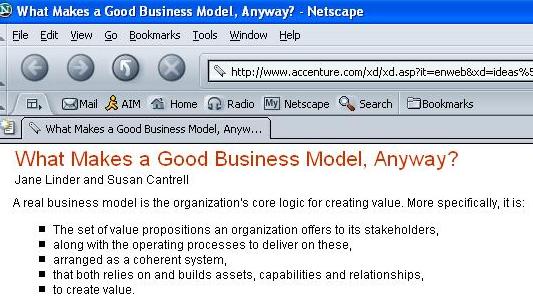
.
| "Few
people can state clearly what a business model is, much less how their
company makes money"
Linder and Cantrell |
"By "business
model," people mean everything from how a company earns its money to how
it structures the organization. Most often, they are referring to components
of a model. Take the so-called clicks-and-mortar business model. This just
says that the company reaches customers over the Internet and through retail
stores—hardly a complete business model."
Linder and Cantrell explain
* The
set of value propositions an organization offers to its stakeholders,
Thanks for the good link Raquel, WTGR |
dd
d
d
.
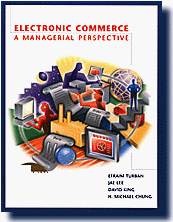
|
Turban: Electronic
Commerce: A Managerial Perspective
Internet
Business Models
The following are the "perspectives" that compose the e-business models, according to the book's authors
|
| .
.................... |
Virtual companies as
a business model
Virtual companies as a concept are not new, in fact they are very old - the only thing that is the use of the adjective "virtual" and the technology which facilitates communication among the corporate components. Virtual companies are essentially a special way that people provide capability to clients. Instead of having to possess all the capability that all your clients need all the time, virtual organizations consist of networks of affiliated people (specialists) and organizations which, depending on the project, will get together to provide a solution to a client which one of the people in the virtual network has. The reason this type of structure has become spoken off in the category of business models in the year 2000 is because it allows individuals and small sized organizations to bid on tasks that may be beyond the capability of the originating consultant - yet, can still be "handled" because the consultant has, through affiliations, friendships and alliances, a virtually larger capability which can be brought in to handle a larger situation. |
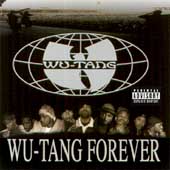 . . |
Virtual companies as
a business model
. Virtual companies are not just contained to the IT business world but exist in many types of formats in business throughout the globe. One example of the diversity in applying virtual companies as a concept is the famous rap group Wu-Tang Clan.
As TIME magazine noted, (Dec 11th issue, 2000) "The Wu-Tang "brand" blossomed in 1993. Each member of the group periodically goes off and does some solo project from which they develop additional capability and experience, at the same time keeping public their alliance and affiliation with Wu-Tang. The "brand", in the form of the bands members, continue to also put out products under the bands name as well in order to maintain the value of the "base" of their individual reps. The
strength of the company, as explained in TIME, is "... maintaining
just a small core and outsourcing everything else."
|
 . . |
Virtual companies as
a business model
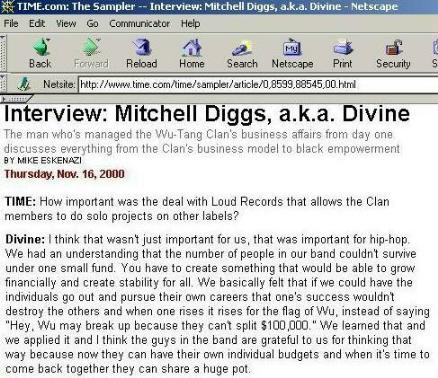
link to http://www.time.com/time/sampler/article/0,8599,88545,00.html (Still active in October 2006)
|
 . . |
Virtual companies as
a business model
The
band members have so many sites devoted to their activities that Yahoo
has devoted an entire Yahoo category to them
"Everything
else" is their forays into video games, clothing, comics, movies and many
other constantly new and evolving merchandise crossing over and back into
music, video, movies and the internet.
|
| Disclaimer:
The author of this web page, [witiger] does not necessarily advocate or subscribe to the lyrics, imagery or lifestyle associated with Wu-Tang Clan, [which some may find objectionable] or any other musical group noted herein. The purpose of noting this organization is strictly in the context of exploring the great diversity of business activity which is online, and reflects the diversity of business globally. The entertainment industry is often the particular area of business that adopts new technologies for creating "content" and sharing "content", yet many traditional business academics still choose to use examples from consumer product companies when discussing new ideas. The author of this website chooses to explain examples a bit differently ! |
| AMAZON | Amazon's competitive Structure
p. 39 - 40 in Turban text
Additional information above and beyond the text reference to Amazon is linked below. 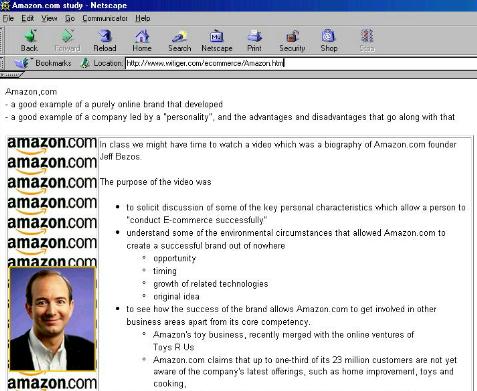 |
| Business
models and the patenting of them |
Business models and the
patenting of them
"Patents on Internet Business
Models"
"Why should you care?" Why? Because you'll find out, that most, if not all of the business practices that are completely common and obvious on the Internet today... will have been PATENTED by corporate behemoths like Amazon.com or Priceline.com... making it outright ILLEGAL for you to: 1.) Set up an affiliate program
on your own;
...unless you ask Amazon.com for permission to do so; ...unless you buy the software from the single (or one of few) vendors that have been licensed by Amazon.com or Priceline.com, etc. to legally sell such software; ...unless you pay a
hefty MONOPOLY PREMIUM because all competition in the Web software market
has been virtually eliminated;"
|
| Business
models and the patenting of them |
Schmidt
explains
"What damage has been done? Amazon.com owns a patent on their "groundbreaking" idea of one-click ordering: This is the idea of placing a button on your Web site that allows ordering without entering credit card details every time you place the order. The USPTO should have said: DUH! Instead, they granted patent number 5,960,411 on 9/28/99. Now Amazon.com received a patent on "affiliate programs": The idea of issuing someone commissions as a reward for all sales that have been generated by a hyperlink from their site to yours. Again, anybody who ever created just one Web page would say: DUH! But the USPTO granted patent number 6,029,141 on 2/22/00. BOTH IDEAS ARE PLAIN AND OBVIOUS. But, due to a loophole in U.S. patent law, you, me, or anyone, could have applied for a "patent" on these business processes, so as to extort royalties, or impose a de-facto e-commerce tax on virtually all transactions made anywhere on the Web, from anyone in the world who ever chooses to create Web sites that employ the same, inevitable, and obvious IDEAS." |
| Business
models and the patenting of them |
Business models and the
patenting of them - the Law Firms Involvement
Jones and Askew - (noted in IEC 719), has an article on their web site discussing Patent Protection for E-Commerce Business Models
The premise, that Jones and Askew operate on is based on attracting traffic. They explain... "To succeed in this competitive e-commerce market, a business must attract as many consumers as possible to its Web site, while building and retaining consumer loyalty. Sometimes, a Web site is more attractive to consumers because it is built with cutting edge technology that provides advanced audio/visual user interfaces, services and security measures. E-commerce proprietors have recognized that a competitive advantage may be gained by securing patent protection for such technological innovations. Other times, the appeal of a Web site does not lie in cutting edge technology, but rather is due to an innovative business model. E-commerce proprietors may be surprised to learn that patent protection also may be available to protect innovative business models embodied in computer software." "To obtain a patent, an inventor must demonstrate that an invention is directed to patentable subject matter and is useful, novel and non-obvious over the prior art. An invention must fall into one of four classes of patentable subject matter: machines, articles of manufacture, compositions of matter, and processes. For example, a computer software invention can be viewed as a machine when combined with a computer, an article of manufacture when distributed on a diskette or a CD-ROM, or a computer-implemented process. An improvement to an invention included in these classes may also be patentable. Examples of "unpatentable" subject matter include a mere idea, printed matter, an inoperable device, e.g., perpetual motion machine, and an obvious improvement of an old device. Typically, any arguable use for an invention will suffice to meet the usefulness requirement. To qualify for patent protection, an invention must be novel when compared to prior solutions to the problem solved by that invention, i.e., the prior art. Two broad categories of prior art which may destroy novelty include (1) events which occur prior to the date of invention and (2) events which occur more than one year prior to the filing date of a patent application directed to the invention. If an event satisfies either requirement, it is considered prior art. " Permission to quote from the old www.jonesaskew.com website given by Tony Askew in an email 2005 May 16th, copy of the email is on file in the permissions binder. |
..
"Web
1.0 was primarily a publishing and transactional environment.
Web
2.0 as a space where users co-create value.
Web
3.0 as a semantic space where machine intelligence combines with human
intelligence to create new insights.
Web
4.0 as a mobile space where users and real and virtual objects are integrated
together to create value.
Web
5.0 a sensory emotive space where we are able to move the web from an emotionally
flat environment to a space of rich interactions."
from
Title: What is your Web 5.0 strategy?
Ajit
Kambil, Journal of Business Strategy Year:2008 Volume:29 Issue: 6 Page:
56 - 58
|
|
CONTACT I MAIN PAGE I NEWS GALLERY I E-BIZ SHORTCUTS I INT'L BIZ SHORTCUTS I MKTG&BUSINESS SHORTCUTS I TEACHING SCHEDULE |
| . | |
|
MISTAKES
ITEXTS
USED I
IMAGES
I RANK
IDISCLAIMER
I STUDENT
CONTRIBUTORS I FORMER
STUDENTS I PUBLICATIONS
I TIPS
I |
|
| . |